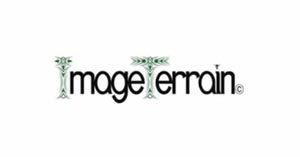
As someone who is always working on bringing new ideas into fruition, running from one place to another, having networking coffee dates, and sinking my teeth into new projects, I really appreciate the tools that make my life a bit easier. From my Blackberry and my iPod to Facebook and Twitter, convenient time-saving technology is an important part of my life.
So when I came across Image Terrain, I was intrigued by the possibilities. While I was cruising around the internet, I stumbled on a video highlighting a designer’s platform that allows anyone to upload an image and create an almost endless array of patterns and repeats, with a few clicks of a button.
For a textile designer this sounds like quite a handy tool, right? Well, I’m not sure. While I really like the idea that a program like this can cut your work time in half, I can’t help but wonder if something gets lost. I know, I know. An argument can be made that Photoshop and Illustrator have been widely accepted and are now absolute musts in the textile design world but I still can’t help feeling that tools like this stunt creativity a bit. Don’t get me wrong, the idea that I can upload an image of a building and turn into a long list of various plaid patterns is really cool but does this make everyone a textile designer? Why did I spend 4 years in college studying textile design if there’s now a way for anyone with a camera or a scanner to put together a portfolio of work to market to the industry?
What do you think? Do I have a valid point or do I just sound like a bit of a fogey unwilling to adapt to change? Be honest, I can take it!

Theo Meth
By the way, thank you so much for taking the time to review and comment upon our site.
Theo
Theo Meth
Hi Nicole,
I noticed your response. I am one of the three partners of Image Terrain. I also owned and operated a textile design studio in Manhattan for over 25 years. When I began there was no Photoshop or color copiers or epson printers or basically any advanced design technology at all. We did everything by hand. In time technology evolved and made our lives easier and in my opinion, more creative. What I found was that we used new technology as a “tool” and we as the artists and designers not only adapted but used these new applications in very inventive ways. For instance artists who have years of hand painting experience and skills are able to use Photoshop and Illustrator in very creatively inventive ways. When you create an image in seconds using Image Terrain you can then take that image over to Photoshop and add elements like a floral motif and create beautiful enhanced designs. We have developed our new surface design technology as a tool for you to apply in new ways as you design. Technology is just a tool! Nothing will replace our own ingenuity and creativity. That’s where new surface design processes and applications come from any way.
Good Luck,
Theo Meth
Nicole
Hi Theo,
I agree, technology is a tool. And like any other art form, textile design has evolved to embrace the advances in technology. I guess at times it’s difficult for me to accept as I am someone who still likes to hand paint half drop repeats, and weave on wooden 4 shaft looms! I imagine though that Image Terrain, Photoshop, and Illustrator are to textile design what the digital camera is to photography, right? I think your surface design technology is something that is important to the field and I do look forward to seeing how industry pros embrace and utilize it.